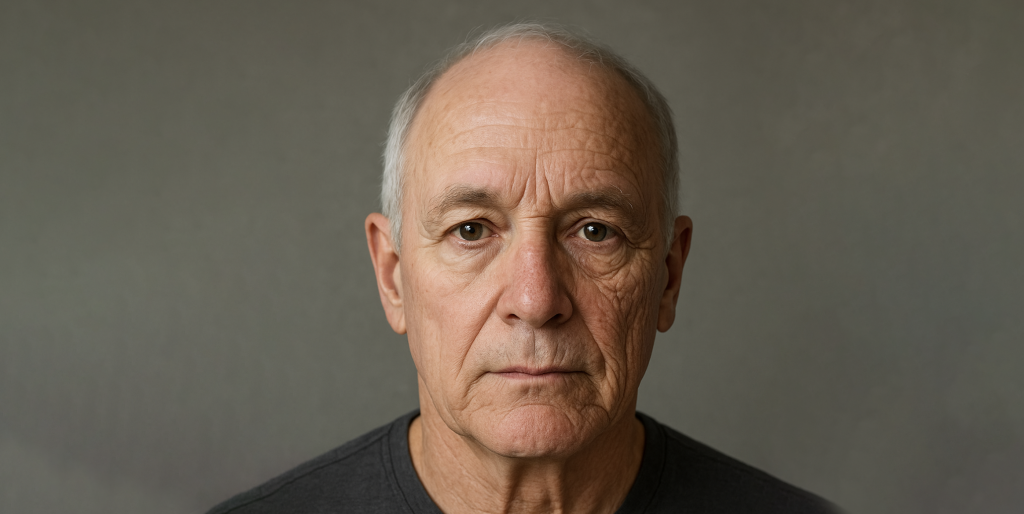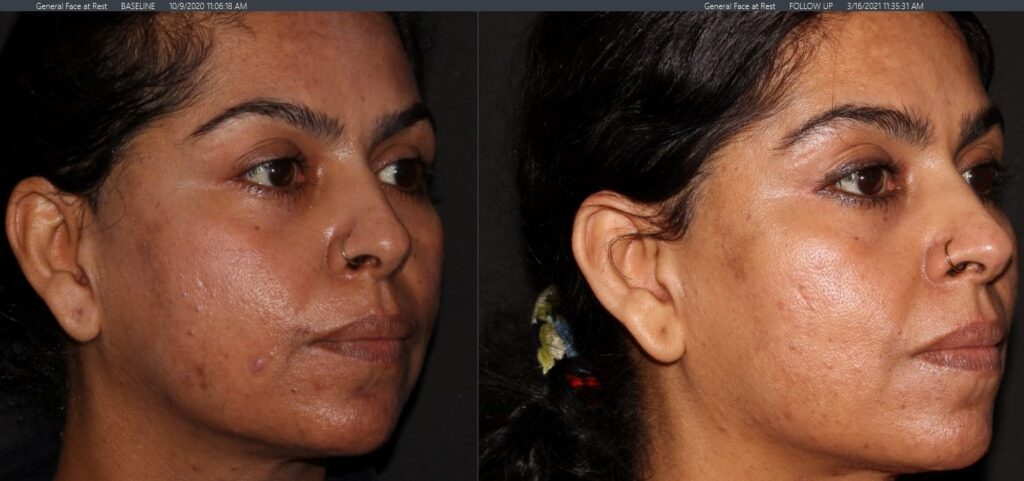When Your Skin Looks Healthier, It Is Healthier.
Skin is one of our most visible and expressive organs—and its condition becomes harder to conceal as we age. At Live Young Medical, we created this guide to help cut through the noise of trending products and confusing messages. Our goal is to provide you with a trusted resource that helps you better understand your skin and how to care for it. Below is an explanation of:
The factors at play in skin aging and unhealthy skin
What you can do at home to both protect your skin and to prevent and treat age and harmful influences.
We carry a wide range of sunscreens and skincare products in-clinic. The added advantage of purchasing through us? Personalized guidance matched to your individual skin needs and personal goals.
What Happens to Skin After Age 30?
This section may feel a little “sciencey”—but understanding why your skin changes can make it easier to commit to meaningful care.
With aging, sun exposure, pollutants, and internal factors such as hormone decline, your skin undergoes:
- Decreased collagen synthesis
- Abnormal elastin build up → crepiness and laxity
- Flattened epidermal contours → dull appearance
- Accumulation of senescent (“zombie”) cells—especially fibroblasts, which produce collagen and elastin
- DNA damage → increased risk of skin cancer
- Chronic inflammation
- Uneven or excessive melanin (pigment)
Zombie cells aren’t just idle—they actively promote collagen breakdown, block new collagen production, and secrete inflammatory compounds. This accelerates DNA damage, stem cell loss, and other cellular aging processes. These changes become self-perpetuating: wrinkles cause more wrinkles, damage begets damage. The longer zombie cells remain, the more they degrade surrounding skin structure, increase inflammation, and inhibit healing.
Estrogen’s Role in Skin Aging
Estrogen plays a major role in women’s skin health. Estrogen receptors are found throughout the skin, and with its decline—particularly post-menopause—these changes occur:
• Reduced sweat and oil gland function → dry skin
• Decline in collagen → thinner, more wrinkled skin
• Loss of facial fat pads → hollowing and sagging
• Bone loss → changes to facial shape and feminine contours
• Hair follicle →Thinning, greying hair, fine white hair face
• Slower wound healing
• Increased skin inflammation—estrogen is a potent anti-inflammatory
In the first 5 years after menopause, women lose about 30% of skin collagen, followed by an additional 2% per year.
Starting around age 35, women also lose about 1 teaspoon (5 mL) of facial fat annually.
At-Home Skin Support: Protection and Treatment
Sun Protection: Sunscreen
Sunscreen is foundational—and it’s often misunderstood. Here are some common questions we hear:
“Why do I burn even when I apply sunscreen?”
Most people apply only 20–50% of the recommended amount. That means:
• SPF 100 at 50% = SPF 10
• SPF 15 at 25% = SPF <2
Best practices:
- Apply 2 tbsp (15 mL) for the body, 1 tsp (5 mL) for face and neck
- Choose SPF 30+ with “broad-spectrum” and water resistance
- Broad-spectrum protects against UVA, skin aging and UVB, burns. Both UVA and UVB contribute to risk for skin cancer.
- Reapply every 2 hours in the sun—or more often if sweating or swimming
Types:
- Chemical (absorbs UV): e.g., avobenzone, octocrylene, Mexoryl
- Physical/mineral (blocks UV): e.g., zinc oxide, titanium dioxide
Dr. Sweeney’s note:
Look for “reef-safe” formulas free from oxybenzone, octocrylene, octinoxate, PABA, microplastics and other ingredients which are harmful to reefs and other marine life. Small and micro particle size zinc and titanium are fine; nano is not. If possible, use water- resistant screens- less will wash off in the ocean.
“I don’t burn and like to tan—why wear sunscreen?”
UVA (which causes aging) and blue light still reach your skin—even through glass. This accelerates:
• Zombie cell accumulation
• Collagen loss
• Elastin damage
• Excess pigment formation
UVA Damage From a Driver’s Window
This 69-year-old man spent 28 years as a truck driver. His left side was continuously exposed to daylight through the window; his right side was shielded.

This image demonstrates how UVA exposure silently degrades collagen and elastin, the skin generally and underlying fat, leading to deep wrinkles, sagging, and uneven pigmentation—all without a single burn.
This damage worsens cellular senescence, where aging skin cells (so-called “zombie cells”) drive inflammation, break down collagen, and impair skin repair. Over time, wrinkles literally cause more wrinkles.
Blue light (from the sun and screens) increases oxidative stress and pigment production—especially important in:
• Skin of color (Types III–VI)
• People with melasma or post-inflammatory hyperpigmentation
Solution: Use tinted sunscreens or foundations with iron oxides to block blue light.
• Hats and sunglasses
• Clothing with UV protection
• Seeking shade
• Neutralizes UV- and blue-light–induced oxidative stress
• Promotes even skin tone, a more even distribution of melanin
• Essential in collagen synthesis
• Vit C 10–20% concentration
• Acidic pH (~3) for optimal absorption
• Stabilizers like vitamin E and ferulic acid
• Airless, opaque packaging to prevent oxidation of Vit C
Topical application is necessary—oral intake won’t reach therapeutic skin levels.
At Live Young, we carry SkinCeuticals (apply before sunscreen) and ZO Skin Health (more flexible application).
• Brightens uneven pigmentation: 44% with Vitamin B3 55% with HQ
• For severe pigment/ Melasma: regular use paired with retinoic acid, broad spectrum sunscreen and zinc oxide.
• Niacinamide reduces the risk of new non-melanoma skin cancers at high oral doses (1,000 mg/day) in individuals with prior history. This is not the flushing form of B3- niacin.
At-Home Skin Support: Treatment
Vitamin A Derivatives (Retinoids)
Gold Standard: Prescription retinoic acid (tretinoin)
Effective alternatives:
• Retinaldehyde (retinal)
• Retinol
Start low, go slow. Tolerance— “retinization”—takes time and varies based on skin type and product strength. Mild redness, dryness, or peeling is common and manageable.
Bonus: Retinoids improve skin tone and texture and reduce pigment.
Use sunscreen, as they increase sun sensitivity.
Topical estradiol (E2) and estriol (E3) can:
• Improve skin hydration and thickness
• Enhance retinoic acid effectiveness
• Reduce signs of aging through collagen and elastin production
• Some topical peptides boost collagen—especially for those who can’t tolerate retinoids
• Oral collagen peptides (≤20 kilodaltons) may mildly improve skin if taken daily for 6+ months
The Cellular Fix: In-Clinic Energy-Based Treatments
Topicals improve superficial signs of aging—but don’t address the deeper drivers like zombie cells.
• Penetrate superficial to deeper skin layers
• Trigger cellular renewal, regenerative skin factors and new collagen and elastin
• Clear senescent “ zombie” cells and stimulate new, healthy cell production.
• Microneedling with radiofrequency
• Fractional and ablative lasers
• Deep chemical peels (not currently offered at Live Young)
These generate small controlled injuries promoting a healing response that renews skin at a cellular level, improving not only appearance but also the skin’s health and resilience over time.
The Takeaway
Healthy, vibrant skin requires both protection and stimulation. At Live Young Medical, we pair at-home care with professional in-clinic treatments for compounded benefits. Energy-based treatments are powerful—more so when paired with consistent sun protection and quality home care.
Let us help you build a skincare approach that works—personalized, evidence-based, and backed by decades of experience.
When your skin looks healthier, it is heathier.
